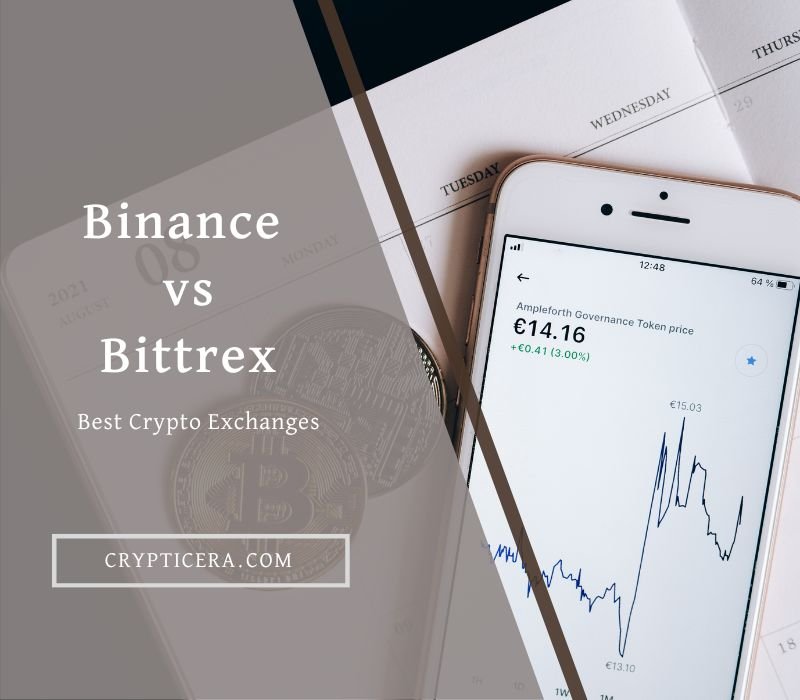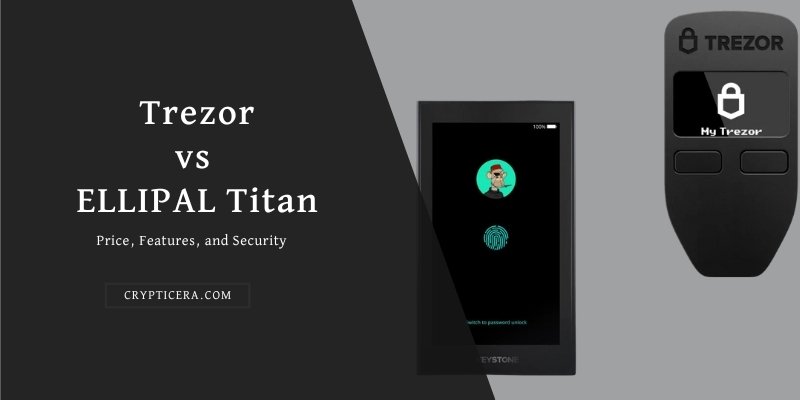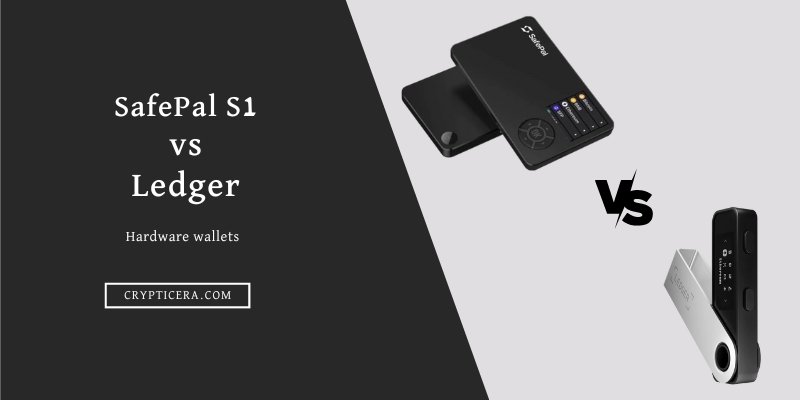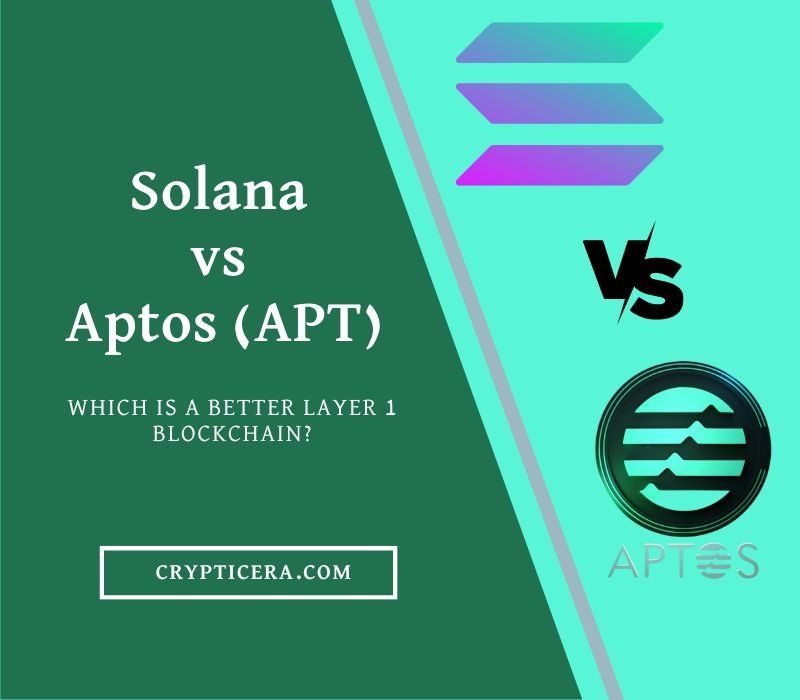When it comes to choosing a cryptocurrency exchange, Binance and Bittrex are two of the most popular options on the market. Both platforms have a strong reputation and a wide selection of digital assets available for trade.
However, they also have some significant differences that may make one a better choice for your needs.
In this blog post, we will compare Binance and Bittrex to help you decide which exchange is right for you.
We’ll look at their fees, security measures, available coins, and other key features to help you make an informed decision.
Binance vs. Bittrex: The Ultimate Comparison
| Feature | Binance | Bittrex |
|---|---|---|
| Launched | 2017 | 2014 |
| Supported countries | Global | Global |
| Security | High | High |
| Liquidity | High 957 (CMC) | Low 401 (CMC) |
| Solvent | Yes (On-chain data shows $60 billion+ reserve assets) | No data |
| Trading fees | 0.1% | 0.35% |
| Deposit fees | None | None |
| Withdrawal fees | Varies by coin and network | Varies by coin |
| Supported coins | Over 320 | Over 370 |
| Supported fiat | USD, EUR, INR, 40+ | Only USD |
Binance

Binance is a global cryptocurrency exchange that provides a platform for trading various cryptocurrencies. It offers a wide range of trading options, including spot trading, margin trading, and futures trading. The exchange also Supports P2P and Debit card payments.
Pros
User Friendly
Very low trading fees
Fully Solvent and high liquidity
Variety of Trading tools
Cons
Low-cap coins not Available
Restricted in some countries
Key Features of Binance Crypto Exchange
- Wide range of trading pairs: Binance offers a wide range of trading pairs, including both major cryptocurrencies (such as Bitcoin and Ethereum) and a variety of smaller, altcoin projects.
- Low fees: Binance has relatively low fees compared to other exchanges. It charges a flat 0.1% fee on all trades, with discounts available for users who hold Binance Coin (BNB), the exchange’s native cryptocurrency.
- Fast and reliable: Binance is known for its fast and reliable trading engine, which is capable of handling high volumes of trades without experiencing delays or downtime.
- Advanced trading features: Binance offers advanced trading features such as margin trading, futures trading, and options trading for users who want to take on more risk or engage in more complex trading strategies.
- Strong security: Binance places a strong emphasis on security and has implemented a number of measures to protect user accounts, including two-factor authentication, cold storage for digital assets, and regular security audits.
- Multiple language support: Binance has a multi-language platform and supports a wide range of languages, including English, Chinese, Japanese, Korean, Russian, Spanish, and more.
Bittrex

Bittrex offers a secure and reliable platform for trading cryptocurrencies, with a user-friendly interface and a wide range of trading tools and features. It supports a variety of order types, including limit orders and stop orders, and allows users to view real-time market data and charts.
Pros
Low trading fees
Regulated
Number of crypto assets Supported
User-friendly Mobile App
Cons
KYC is Necessary
Not Suitable for high-volume traders
Not highly Liquidated
Key Features of Bittrex Exchange
- Wide selection of cryptocurrencies: Bittrex supports a wide range of cryptocurrencies, including many popular ones such as Bitcoin, Ethereum, and Litecoin, as well as many lesser-known altcoins.
- High liquidity: Bittrex has a high level of liquidity, which means that there are always a large number of buyers and sellers on the platform, making it easy to buy and sell cryptocurrencies.
- Advanced security measures: Bittrex takes security very seriously and uses a variety of measures to protect its users, including two-factor authentication, SSL encryption, and cold storage of digital assets.
- Fast and efficient trading: Bittrex uses advanced technology to ensure that trades are processed quickly and efficiently, with low latency and high throughput.
- Multiple markets: Bittrex offers trading in multiple markets, including USD, EUR, and BTC, as well as several other fiat and cryptocurrency pairs.
- Advanced trading tools: Bittrex provides a range of advanced trading tools, such as stop-loss orders and trailing stops, to help traders make informed decisions and manage their portfolios effectively.
Differences & Similarities between Binance and Bittrex
Binance Fees
Trading fees: 0.1% for both maker and taker orders. If you Hold BNB, you can get a trading fee discount of 25%.
Withdrawal fees: These vary depending on the cryptocurrency being withdrawn, but for popular cryptocurrencies like Bitcoin and Ethereum, the fees are typically around 0.0005 BTC and 0.005 ETH, respectively.
| Level | 30d Trade Volume (BUSD) | Maker / Taker |
|---|---|---|
| Regular User | < 1,000,000 BUSD | 0.1000% / 0.1000% |
| VIP 1 | ≥ 1,000,000 BUSD | 0.0900% / 0.1000% |
| VIP 2 | ≥ 5,000,000 BUSD | 0.0800% / 0.1000% |
| VIP 3 | ≥ 20,000,000 BUSD | 0.0700% / 0.1000% |
| VIP 4 | ≥ 100,000,000 BUSD | 0.0200% / 0.0400%0.0700% / 0.0900% |
| VIP 5 | ≥ 150,000,000 BUSD | 0.0200% / 0.0400%0.0600% / 0.0800% |
Bittrex Fees
As a user of Bittrex, the more you trade, the more you can save on fees thanks to a fee schedule that rewards higher trading volume.
The specific fee rate that you will be charged for a trade depends on your account’s 30-Day Volume and whether the trade is classified as a Maker or Taker.
| 30 Day Volume | Maker Fees | Taker Fees |
|---|---|---|
| Less than $25000 | 0.35% | 0.35% |
| $25000 – $50,000 | 0.25% | 0.30% |
| $50,000 – $1000k | 0.15% | 0.25% |
| $1000k – $1M | 0.10% | 0.20% |
Trading Features
- Spot trading: This is the most common type of trading on both Binance and Bittrex, and it involves buying and selling cryptocurrencies at their current market price.
- Margin trading: Both Binance and Bittrex offer margin trading, which allows users to borrow funds from the exchange to amplify their buying power. This can be a high-risk, high-reward trading strategy, and it is not suitable for everyone.
- Futures trading: Binance offers futures trading, which allows users to trade contracts that will be settled at a later date. This allows traders to speculate on the future price of a cryptocurrency.
- OTC trading: Binance and Bittrex both offer over-the-counter (OTC) trading, which allows users to buy and sell large amounts of cryptocurrencies without affecting the market price. This is often used by institutional investors and high-volume traders.
- Limit orders: Both Binance and Bittrex allow users to place limit orders, which allow them to set a specific price at which they want to buy or sell a cryptocurrency. These orders will only be executed when the market price reaches the specified price.
- Market orders: Both platforms also allow users to place market orders, which are executed immediately at the current market price.
Available Cryptocurrencies
As of 2021, Binance offered trading for over 383 cryptocurrencies, including Bitcoin, Ethereum, and Litecoin. In addition to these major cryptocurrencies, Binance also supports trading for a wide range of altcoins, such as Binance Coin (BNB), Cardano (ADA), and XRP.
Bittrex also offers over 366 cryptocurrencies for trading, including Bitcoin, Ethereum, and Litecoin. In addition, Bittrex supports trading for a number of altcoins, such as Monero (XMR), Dash (DASH), and Zcash (ZEC).
It’s worth noting that the availability of specific cryptocurrencies on these platforms can change over time, so it’s always a good idea to check the current list of supported assets on the platform’s website before trading.
Cold Storage
Binance recommends the use of Trust Wallet as a hot wallet option for storing and managing cryptocurrencies. Trust Wallet supports a wide range of cryptocurrencies across multiple blockchains.
In addition to Trust Wallet, Binance also allows users to transfer their funds to external cold storage wallets such as SafePal S1, offered by Binance Labs.
Bittrex, like Binance, offers a web-based wallet within the platform itself, but users can also transfer their funds to other wallet options.
Bittrex does not have a specific list of supported wallets and may remove some wallets that do not have markets.
Security
Both Bittrex and Binance have implemented a range of security measures to protect user accounts and prevent unauthorized access. These measures include two-factor authentication, email verification, and IP whitelisting.
To date, Bittrex has not suffered any major security breaches. Binance, on the other hand, has suffered two major hacks in the past, one in May 2019 and another in May 2020.
However, it’s important to note that in both cases, Binance was able to recover and compensate users for their losses.
Bittrex offers insurance coverage for the assets held in its hot wallets (online wallets that are connected to the internet). Binance does not currently offer insurance for assets held in its hot wallets.
Binance vs Bittrex: Final Thoughts
Binance and Bittrex are two of the largest and most popular cryptocurrency exchanges in the world. Both exchanges offer a wide range of cryptocurrencies for trading, as well as advanced trading features for experienced users.
In terms of security, both Binance and Bittrex have strong track records and have implemented robust security measures to protect user funds. However, Binance has had some security breaches in the past, which may give some users pause.
One major difference between the two exchanges is the fees they charge. Binance generally has lower fees than Bittrex, although the exact amount will depend on the specific trading pair and the type of order being placed.
Binance also offers a discount for users who pay fees with their native token, BNB.
In terms of user experience, Binance has a more user-friendly interface and offers more educational resources for new users.
Bittrex, on the other hand, is geared more toward professional traders and may not be as intuitive for beginners.



